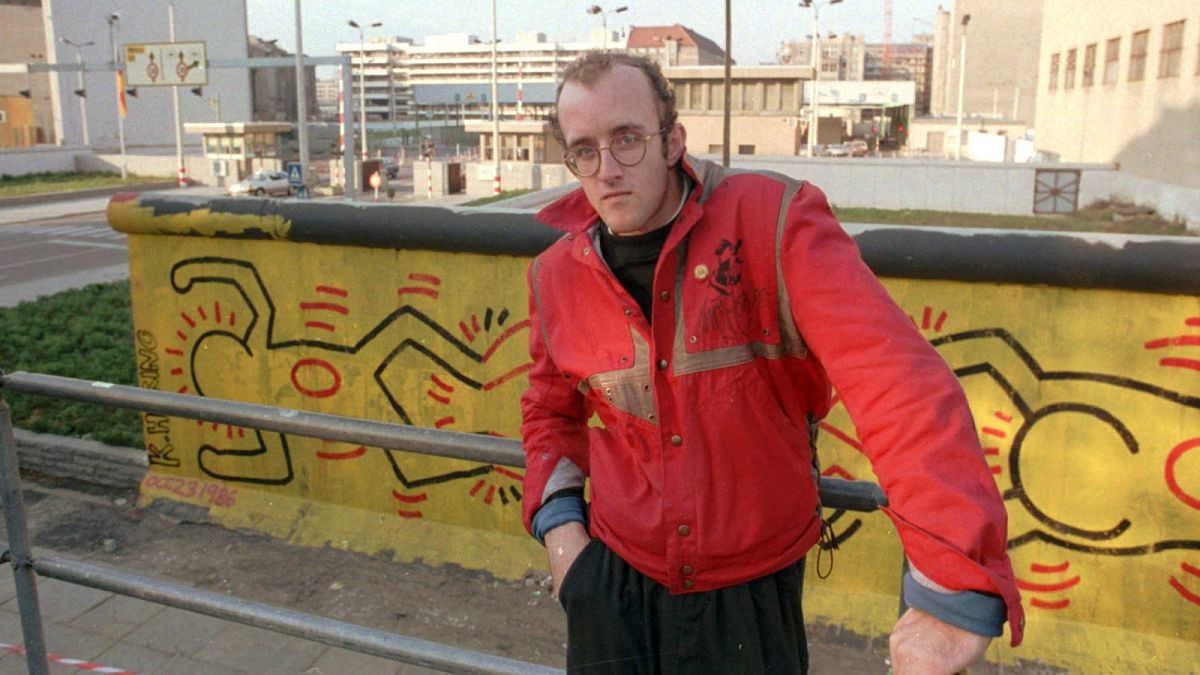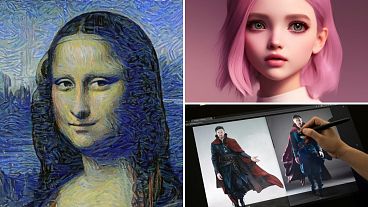A controversial transformation of an important artwork by generative AI has significantly undermined its message, as well as raised ethical questions regarding artists' rights.
A social media user has used artificial intelligence to "complete" Keith Haring’s ‘Unfinished Painting’, sparking outrage online.
It all started when artist Brooke Peachley shared a post of Haring’s painting on X, writing that it was an example of “visual art that never fails to destry you every time you see it.”
Enter X user Donnel, who took it upon themselves to give the painting the AI treatment.
“The story behind this painting is so sad! (crying emoji),” wrote Donnel. “Now using AI we can complete what he couldn’t finish! (heart emoji).”
Attached to his comment was an altered version of the painting, which fills in the white space of the original artwork with more of Haring’s trademark figures.
The “sad story” refers to the fact that Haring died of AIDS-related complications in 1990 at 31 years old, seemingly leaving the piece unfinished.
However, what Donnel failed to realise is that the controversial transformation significantly undermines the artwork’s message.
‘Unfinished Painting’ is a powerful social commentary on the AIDS crisis, and its “incomplete” nature is by design, reflecting the lives cut short of many people suffering from the condition. Therefore, a tone-deaf and some might say ignorant modification which completes the painting ignores the piece's context, disregards its intent, and destroys its meaning.
One X user said that “the ai sees a picture of a human and bastardises it, making it into meaningless squiggles, much like what it does to art in general”, while another commented that the modification was “a desecration of his art and i hope your heinous action does not go unpunished.”
Several people on X also accused Donnel of being homophobic, while some recognized their post as a prime example of “rage baiting”, referring to the manipulative tactic of sharing content that elicits outrage with the goal of increasing traffic and attention.
“This might be greatest bait post I've ever seen,” wrote one user. “Like, it hits on *so many* angles I can't even begin. And for certain groups this is gonna be straight up blasphemy, the kind that religious folks feel when a divine icon is desecrated. Amazing.”
Social media algorithms reward “rage bait,” leading many to post content with the sole purpose of sparking anger.
Beyond these depressing social media practices, the controversial reworking of Haring’s work has also raised ethical questions, with many commenting that using AI to complete a late artist’s work is unethical, and in this case, disrespects those with AIDS or who have lost loved ones to acquired immunodeficiency syndrome.
While the AI alteration may not be illegal, it once again highlights how generative AI can violate artists’ rights.
Creators worldwide voiced their exhaustion throughout 2023 regarding OpenAI. From cartoonists and illustrators taking legal action to reclaim copyright and consent by filing class-action lawsuits; the controversy over AI-generated photos at the Sony World Photography Awards; musicians speaking out against ChatGPT and saying that AI "will be the future artists’ greatest adversary"; and celebrities suing OpenAI over copyright infringement, there is a pressingneed for more regulatory frameworks concerning ethical AI usage. And 2024 will only hear these voices getting louder.



